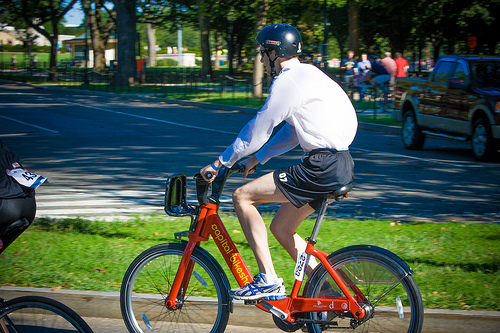
Photo by Francesco di Bellinzona.
One of the terrifying qualities of modern pollution is that you can’t always see it. In old pictures of industrial cities, the pollution was disgustingly apparent. But today, pollution is often invisible, even though it’s no less dangerous.
Aaron Reuben and Gabriel Isaacman have come up with a way for people to feel pollution more viscerally: They’ve made it audible. At the Atlantic, they explain how they worked that magic:
We created sounds from air samples (atmospheric particulate matter collected on filters) by first using gas chromatography to separate the thousands of compounds in the air (try it with markers at home) and then using mass spectrometry, which gives us a unique “spectrum” for chemicals based on their structure, to identify the compounds and assign them tones. Some compounds end up sounding clear and distinct, while others blur together into unresolvable chords. The result is a qualitative, sensory experience of hard, digital data.
And also, totally creepy.
That’s from Bakersfield, Calif., the American city with the worst air pollution. Those high individual chirps are “highly unsaturated compounds,” Reuben and Isaacman explain. The dark, low, buzzing chords are “complex, saturated heavy hydrocarbons.” This is the crap that comes from fossil fuels and can make people sick.
At the Atlantic, there are more samples from different areas. As the authors say, the cleaner air of the Sierras has a different feel than the polluted air of Bakersfield. But even that’s not a clear, pretty tune; the drone of car pollution still creeps in.



